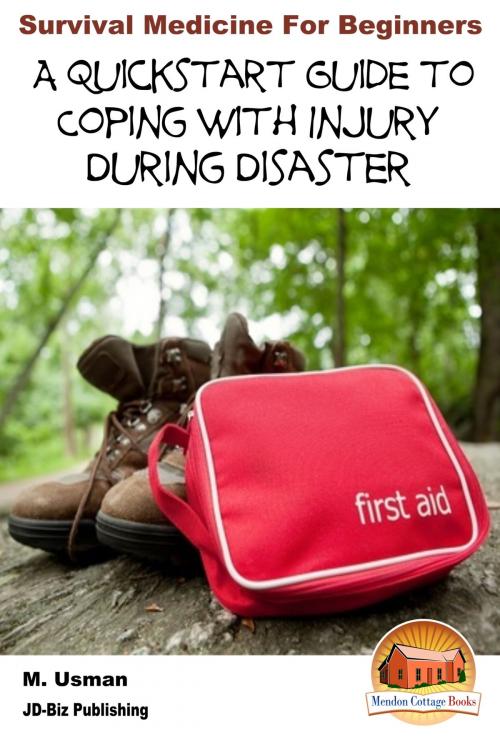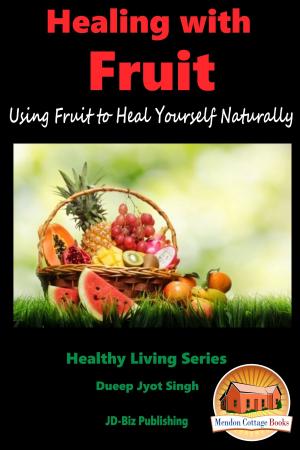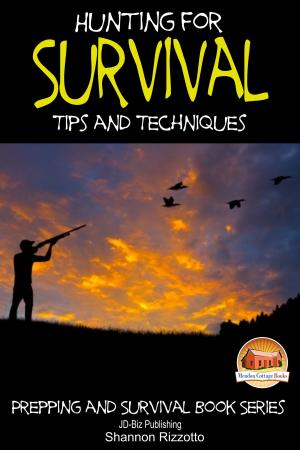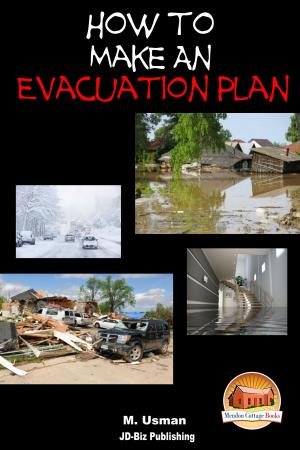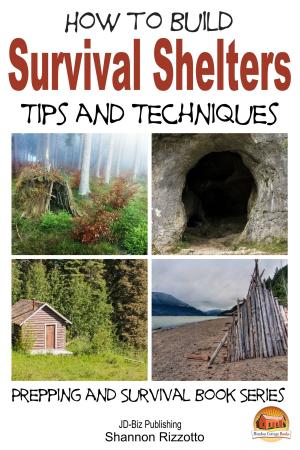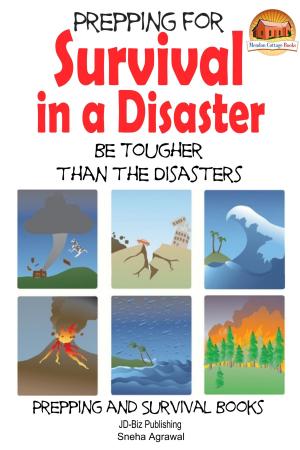Survival Medicine for Beginners: A Quick start Guide to Coping with Injury during Disaster
Nonfiction, Health & Well Being, Health, First Aid| Author: | M. Usman | ISBN: | 9781310865619 |
| Publisher: | Mendon Cottage Books | Publication: | June 3, 2015 |
| Imprint: | Smashwords Edition | Language: | English |
| Author: | M. Usman |
| ISBN: | 9781310865619 |
| Publisher: | Mendon Cottage Books |
| Publication: | June 3, 2015 |
| Imprint: | Smashwords Edition |
| Language: | English |
Table of Contents
Introduction
Chapter 1 – What’s In Your Kit?
I – The Basic contents of a good first aid kit
II – Conditions for use and precautions
III – Alternative methods for when your pack is not enough
Chapter 2 – Maintaining Your Health
I – Retaining fluids and preventing dehydration
II – Maintaining your nutritional intake
III – A guide to sterile and safe hygiene practices
IV – The importance of rest
Chapter 3 – Using medicines from your kit
I – A quick guide to painkillers, their effects and conditions they should be used in
II – Antiseptics and their uses in preventing infection
III – Antibiotics and the situations they should be used in
Chapter 4 – Using indigenous plants that have medicinal properties
I – Identifying and using plants as painkillers
II – Common plants with antiseptic properties
III – Precautions and dangers of using plants as medicines
Chapter 5 – Injuries to bones or joints
I – Methods for binding injuries
II – Materials that can be used as dressings
III – A guide to caring for dislocations and sprains
Chapter 6 – Emergency and Lifesaving Techniques
I – Controlling blood flow from wounds
II – A quick guide to CPR
Conclusion
Author Bio
Publisher
Introduction
Disaster can strike at any given moment – whether you live in close proximity to natural hazards such as an earthquake zone or active volcano, or whether you live in a seemingly safe urban area. Your geographical location is a major factor when considering the different ways that you may be exposed to dangers, however this is an issue that has the potential to affect you at home, on holiday, or even when you’re visiting a new area. In such situations, it may be difficult to reach the emergency services or contact someone that may be able to help you – you could find yourself isolated from human settlement and left to your instinctive devices.
The basics to survival medicine are often overlooked and cast aside when it comes to common knowledge. How many of us could use indigenous plants as an antiseptic? How many of us could bind a wound using natural dressings? These are key skills that we have no use for in our everyday lives and of course, we can always use a helpful app or the internet to help us, right? But, what could we do in situations when those luxuries are out of reach and the only tools we have is the environment around us?
This guide will cover the essential basics in survival medicine, giving you a basic knowledge and understanding of how to cope with injuries in such distressing situations. From the contents of your survival pack to using potentially life-saving plants and applying emergency techniques – this guide will help you to build up a solid foundation. If you ever find yourself injured in a disaster situation, you’ll know where to begin.
Table of Contents
Introduction
Chapter 1 – What’s In Your Kit?
I – The Basic contents of a good first aid kit
II – Conditions for use and precautions
III – Alternative methods for when your pack is not enough
Chapter 2 – Maintaining Your Health
I – Retaining fluids and preventing dehydration
II – Maintaining your nutritional intake
III – A guide to sterile and safe hygiene practices
IV – The importance of rest
Chapter 3 – Using medicines from your kit
I – A quick guide to painkillers, their effects and conditions they should be used in
II – Antiseptics and their uses in preventing infection
III – Antibiotics and the situations they should be used in
Chapter 4 – Using indigenous plants that have medicinal properties
I – Identifying and using plants as painkillers
II – Common plants with antiseptic properties
III – Precautions and dangers of using plants as medicines
Chapter 5 – Injuries to bones or joints
I – Methods for binding injuries
II – Materials that can be used as dressings
III – A guide to caring for dislocations and sprains
Chapter 6 – Emergency and Lifesaving Techniques
I – Controlling blood flow from wounds
II – A quick guide to CPR
Conclusion
Author Bio
Publisher
Introduction
Disaster can strike at any given moment – whether you live in close proximity to natural hazards such as an earthquake zone or active volcano, or whether you live in a seemingly safe urban area. Your geographical location is a major factor when considering the different ways that you may be exposed to dangers, however this is an issue that has the potential to affect you at home, on holiday, or even when you’re visiting a new area. In such situations, it may be difficult to reach the emergency services or contact someone that may be able to help you – you could find yourself isolated from human settlement and left to your instinctive devices.
The basics to survival medicine are often overlooked and cast aside when it comes to common knowledge. How many of us could use indigenous plants as an antiseptic? How many of us could bind a wound using natural dressings? These are key skills that we have no use for in our everyday lives and of course, we can always use a helpful app or the internet to help us, right? But, what could we do in situations when those luxuries are out of reach and the only tools we have is the environment around us?
This guide will cover the essential basics in survival medicine, giving you a basic knowledge and understanding of how to cope with injuries in such distressing situations. From the contents of your survival pack to using potentially life-saving plants and applying emergency techniques – this guide will help you to build up a solid foundation. If you ever find yourself injured in a disaster situation, you’ll know where to begin.
